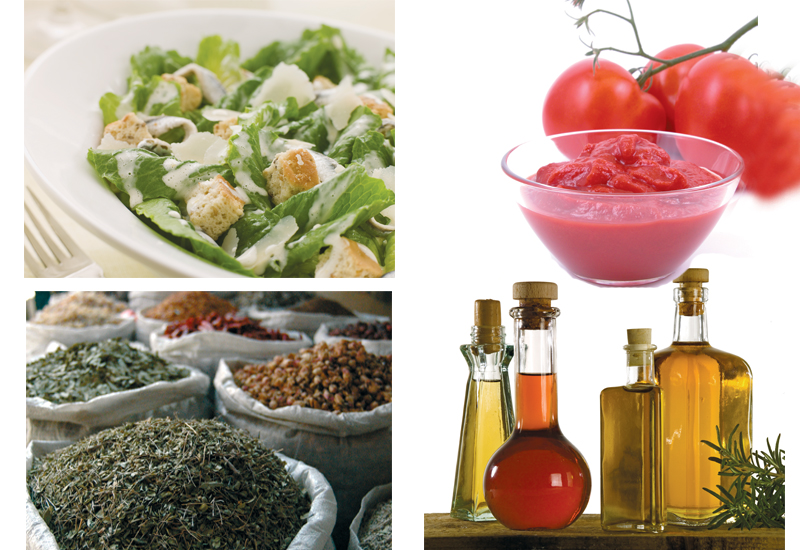“Customers know what goes with what; they know vinaigrette goes with salads, mayonnaise-based sauces go with seafood and terrines, but really they only know the basics,” says Coral’s Miraton.
“They know it adds something to the dish, but not really the range of sauces that can be made or how many of them can make a dish — or ruin it if the right one isn’t used.”
The role of educating the customer with regards to sauces and dressings is the responsibility of the chef, and it is up to him to experiment and develop the market further, according to Dubai Creek Golf and Yacht Club’s Grenard.
“I think that the customer is educated, but we can educate them a little more,” he says.
“We have a wide range of dressings and sauces available, but generally the customer will request a classic type of sauce or dressing.
“We have to try and educate their palette more, but we tend to find that the customer is afraid of change.”
Unilever Food Solutions Arabia assistant brand manager Necip Camcigil says working with his customers in making new sauces and dressings is essential during the current economic woes, especially considering who they are.
“Our customers are chefs and in terms of making sauces from scratch I believe they are very educated,” he says.
“In terms of the products available to the market, chefs are aware to varying degrees on what’s out there.

Advertisement
“We try to communicate our own range regularly to our target market and we also devote a great deal of effort in informing chefs how our products can help them in their operations, especially at the moment where efficiency is more important than ever,” he explains.
Customer demand
Although customers might not be very adventurous when it comes to sauces or dressings they are not familiar with, it is still important for chefs to keep track of regional consumer tastes and thereby develop the appropriate new creations for the market.
Assia in Wok’s Nurul notes that lemon and olive oil dressings are very popular in the Middle East.
“Most of our Middle Eastern guests prefer sauces that are sour in taste and light in consistence; they don’t particularly like spicy flavours,” he says.
Dusit Thani’s Rio adds that regional customer preference also lies with local spices and cream based sauces.
“I do believe, however, that European sauces and dressings are popular in the Middle Eastern region,” he notes.
Dubai Creek Golf and Yacht Club’s Grenard suggests barbeque sauces are the most popular regional varieties.
“The most popular ones in my experience are the barbeque sauces — a category which generally includes béarnaise, pepper sauce and mushroom sauce,” he asserts.
“For the dressings, the popular regional favourites are tartare sauce, cocktail sauce and French dressings; and as for sauces with Middle Eastern origins there are saffron sauces and tahini sauces.”
Dusit’s Rio asserts that the region’s consumers are extremely particular about how their sauces and dressings are prepared and presented to them.









 Search our database of more than 2,700 industry companies
Search our database of more than 2,700 industry companies









